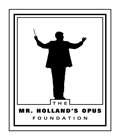« Great Albums Not on Billboard’s Top Ten | Home | Five Great Rock Albums from the 70s »
Sampling From the Past: A Look at Using Old Records to Create New Music
Post By: NyonS
The phrase “There’s nothing new under the sun” is just as applicable to music as it is anything else. And while many scholars have defined originality as something new and never seen before, allow me to play devil’s advocate for a moment.
Consider the U.S. patent system and their methods for determining whether an item should be available for mass market. The patent office will typically award a patent to a person who proves their invention to be new. But in most cases, they will also give one to a creation that is ‘non-obvious, useful or industrially applicable.’
Now let us return to music. There are many music producers, past and present, that use samples of other artist’s recordings to create a new composition. Some use a full four-bar measure of an original and loop it. But I don’t find this method to be very artistic unless it is layered with another sample.
This is known as blending, and when done correctly – matching keys, pitches and rhythms between samples – it can be an extremely technical tool in DJing and record producing. But the problem is, very rarely is it done correctly. Using history as a gauge, it would seem that only one in every generation would be able to do it well.
The first of the pioneer in blending melodic compositions was DJ Shadow. In the movie Scratch, DJ Shadow said that looking for records ‘has almost karmic element of finding one record because it works so well with another.’ This is the sound that dominates majority of DJ Shadow’s first album, Endtroducing. Every sample that he uses blends seamlessly with the one before it.
“Building Steam with a Grain of Salt” is the first true song from the album. In this song, DJ Shadow blends the Lexia’s soulful ‘I can fly to the strangest land!’ vocals from “I Worship You” (The Jean Leccia Interpolation) with the opening guitar from Jermey Storch’s “I Feel a New Shadow” (From a Naked Window).
In the early 2000’s, another producer emerged from Columbus, Ohio named RJD2. I heard never heard another producer do what he does – taking an original record and reworking it into his own composition. On his song “1976”, he mixes the unlikely combination of a Spanish record (Sophy’s “Un Amor Original” from Yo Soy Una Mujer Y Una Santa) and a German Pop record (“Istanbul” from Cora’s self-titled album).
Just as DJ Shadow mentioned in Scratch, “The records that producers sample from are like a pile of broken dreams.” But if it is also true that “if you’re making records and DJing you’re adding to the pile of records you’re sampling from”, how can records that contain samples ever be called ‘not original?’
Join the Conversation: Post a Comment!
Topics: hip hop, Music | No Comments »


